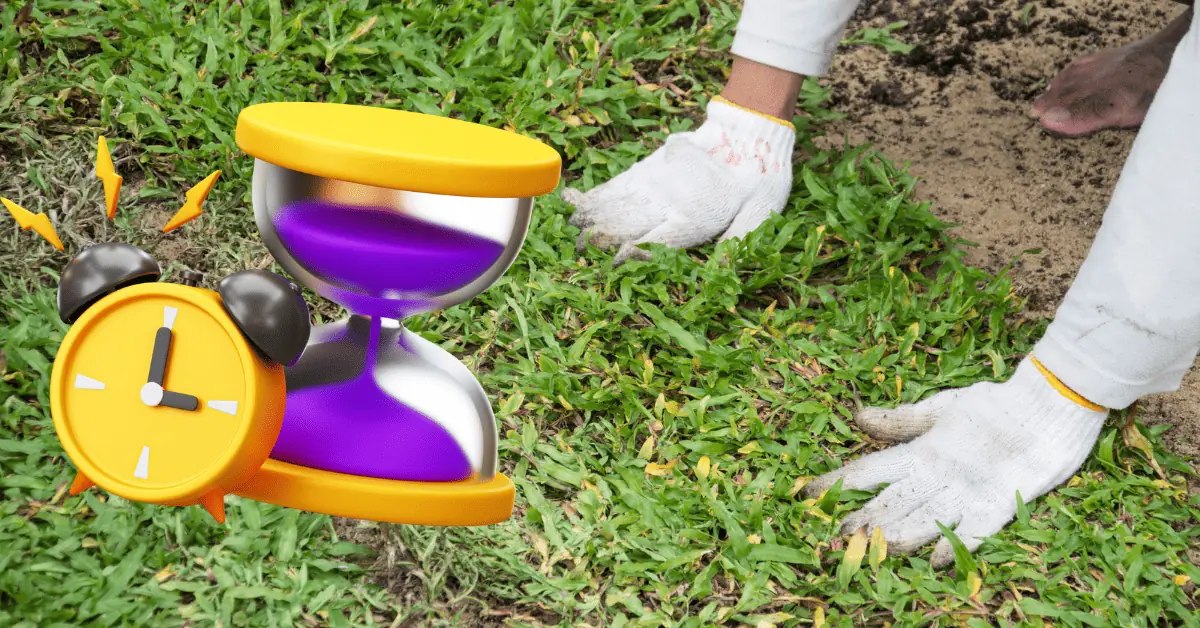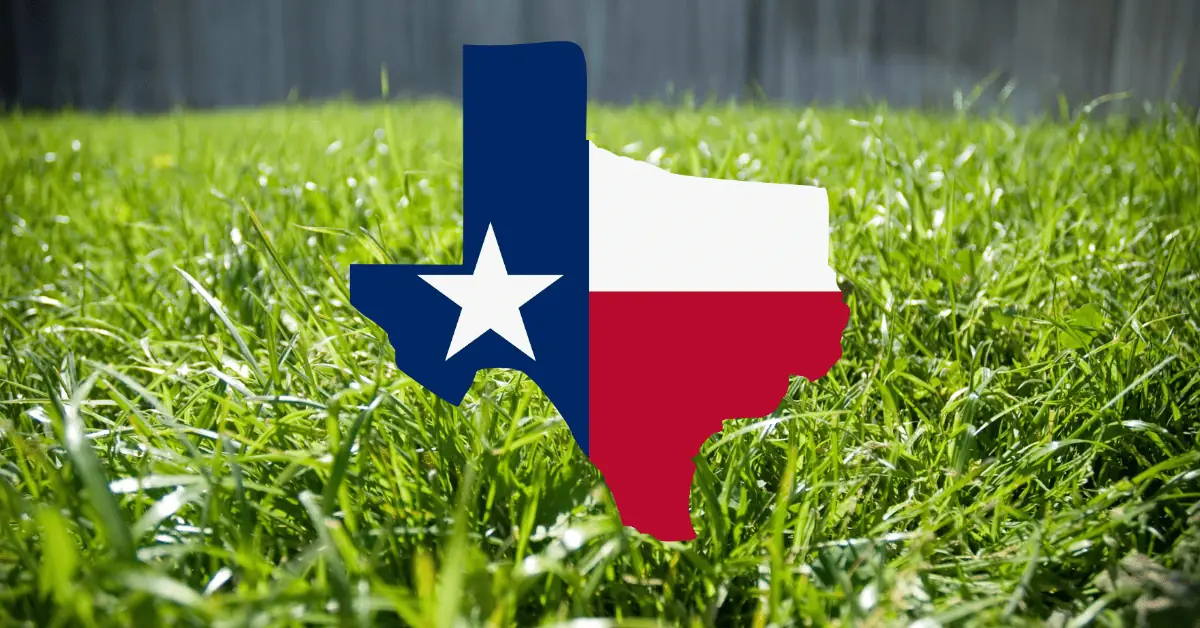So you’ve decided to plant some grass seed in your yard but are still determining the best time to start in Scotland. As with any gardening trial, timing is critical. Plant at the wrong time of year, and you risk your new lawn needing help to get established or germinating.
Plan carefully and achieve a beautiful green lawn! In Scotland, late summer or early fall, specifically August through September, is the ideal time to sow grass seed. The warm soil from summer ensures rapid germination of new grass seeds.
Although the temperatures are cooling down and rainfall increases. It provides the perfect conditions for new grass growth. A bonus is that weed growth starts to slow down in the fall, giving your fresh grass the best chance to establish without as much competition.
So if you get the itch to plant some grass seed, late summer into fall is your prime time in Scotland. With the right seed for your needs and proper care and feeding, you’ll be on your way to a yard that’s the envy of the neighborhood.
Spring: The Optimal Time for Sowing Grass Seed in Scotland

Spring, especially early to mid-spring, is hands down the best time of year to sow grass seed in Scotland. The weather is warming up, the rainy season is in full swing, and soil temperatures are ideal for germination.
From March through May, daytime highs are in the 50s and 60s F, while nighttime lows stay above freezing. These temperatures and spring showers create the perfect moist and warm environment for your new lawn to sprout and establish roots.
- Sow the seeds in early spring, around mid-March to April, for the best results. The soil will get packed with nutrients after winter, and the warming days will help the new grass thrive.
- Mid-spring, around May, is also an excellent option for parts of Scotland with shorter summers. The grass will have time to establish itself before the hot summer weather hits.
- Avoid sowing after mid-June, as the hot and dry summer months make it difficult for new grass to germinate and survive.
Summer Sowing: Only for Certain Grass Types
If you want to sow grass seed during the summer in Scotland, you must choose a seed mix breed to handle the stress. Not all grass types can tolerate the heat and drought that summer brings, so you’ll want to consider the following:
- Slender creeping red fescue is a great summer choice. This durable grass is attractive and can handle heavy foot traffic, making it perfect for lawns, bowling greens, and golf courses.
- This blend comprises various grass types such as perennial ryegrass, tall fescue, red fescues, and browntop bentgrass. It will give you a fast-growing, wear-resistant lawn. These grasses get bred to germinate and establish fast during warm summer months. With their deep root systems, they’re also more drought tolerant.
- Avoid Kentucky bluegrass and fine fescues in summer. These grasses struggle in hot and dry weather, and seedlings must establish better. Save them for spring or fall sowing.
- Prepare the soil with added compost or topsoil to provide nutrients for new grass growth. Rake the area smoothly and remove any debris.
- Water the area well before sowing and keep the top few inches of soil damp as the new grass germinates and establishes. You may need to water in very hot or windy weather many times a day.
- Applying the appropriate amount and frequency of fertilization is as simple as following the instructions provided on the product packaging.
- Mow the grass for the first time once it reaches 3 to 4 inches tall. Then continue mowing to maintain it around 2 to 3 inches.
Autumn: A Second Chance for Grass Seed Germination
Early autumn provides a second opportunity for sowing grass seed if your first attempt went differently than planned. The weather is still mild, rainfall increases, and the soil remains warm—ideal conditions for germination and early root growth before winter dormancy.
- Aim to sow grass seed in Scotland around mid-September to mid-October for the best results. The earlier in autumn you plant, the higher the chance your new lawn will become well-established before frost.
- The harsh summer sun is fading, so grass seedlings won’t dry out or scorch. They’ll have ample moisture and mild temperatures to sprout and develop into tiny seedlings.
- Autumn-sown grass has a head start come spring since the seeds have already germinated. Growth will resume as temperatures rise and day length increases. Your new lawn will green up and thrive much quicker.
Winter Sowing: Not Recommended for Most Grass Types

While winter sowing grass seed may seem convenient, it often leads to failure for most common grass types in Scotland.
The cold winter weather is harsh on new seedlings, and the short days mean less sunlight to help them grow. It’s best to sow grass seed during the late summer or autumn when conditions are more favorable.
Factors that Affect Winter Sowing
- Temperature and Weather Conditions: The frigid temperatures of a Scottish winter can damage or kill new grass seedlings even before they can establish themselves. Most grass types prefer to germinate in warm soil, around 15-20°C. The cold winter air also dries out the soil. And freezing temperatures may cause the ground to become rigid, making it difficult for seedlings to penetrate.
- Shorter Days Mean Less Sunlight: The shorter days of winter mean fewer hours of sunlight to help new grass seedlings grow. Most grass species need abundant light to develop into healthy plants. With less sunlight in winter, seedlings struggle and become spindly and weak. They are also more prone to disease.
Types of Grass for Winter Sowing
Some hardy grass types, like perennial ryegrass, can tolerate winter sowing. Especially if sown in early fall before the weather turns freezing. But, for the best results with most grass types, including Kentucky bluegrass and tall fescue. It is best to sow in late summer or autumn, from August through October in Scotland.
These months provide the ideal temperature, moisture, and sunlight conditions for germination. Plants undergo a period of growth during the beginning of the season, preceding the arrival of winter’s severe weather conditions. You’ll give your new lawn the best start by sowing grass seed in late summer or autumn instead of winter.
During the warmer months, the grass will be able to grow and develop a robust root system. It will help it to survive the winter season. Your lawn will be well on its way to becoming a carpet of green by the following spring.
Conclusion
So there you have it, the prime time to plant grass seed in Scotland. Spring and fall are your best bets for successful germination and establishment.
Avoid the heat of summer and the dead of winter. Pay attention to the weather and soil conditions to ensure everything is ideal.
When right, get out there and plant your new lawn. Before you know it, you will enjoy the soft, green grass and the satisfaction of a well-done job. Now get to it – your yard is waiting! The perfect lawn is within your grasp if you follow the tips for the best time to sow grass seed in Scotland.






